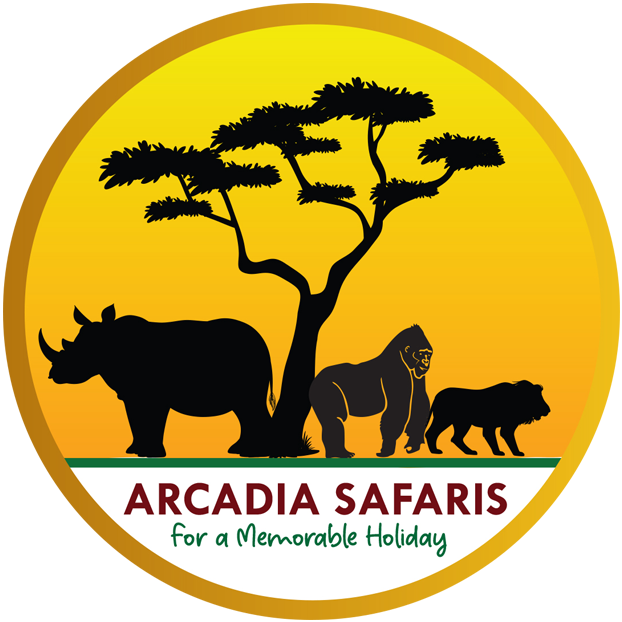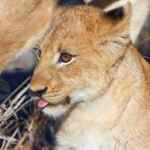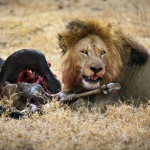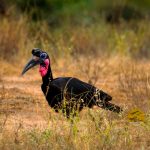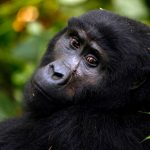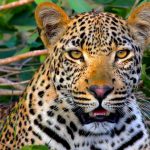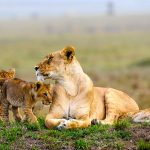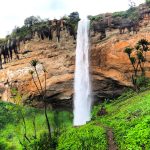Rwanda Gorilla Trekking: A Journey into the Heart of Africa’s Majestic Wilderness.
Gorilla Trekking in Rwanda; Rwanda’s misty, mountainous forests provide a home for some of the world’s most incredible animals: the endangered mountain gorillas; Because they can only be found in three countries-Rwanda, Uganda, and the Democratic Republic of Congo-they are rare and an utter wonder of nature; Nothing comes close to the experience of trekking through the dense jungles of Rwanda, coming upon a family of gorillas face to face-a moment that will leave you alive with emotion and humility. Take a look below for information on all things from timing your trip to what to expect on the trail.
Why Choose Rwanda for Gorilla Trekking?
The Volcanoes National Park in Rwanda is home to approximately a third of the world’s remaining mountain gorillas and provides a rare and special setting for trekking; Lying within the dramatic Virunga Mountain Range, the thick forests of this park are a dwelling place for 12 habituated groups, often controlled by an inspiring silverback; With excellent conservation in Rwanda and stable tourism infrastructure, the country has become one of the safest, most accessible, and responsible places to encounter these animals in their natural habitat.
The visits are highly regimented by the government, which allows only a few visits daily, and keeps a distance to protect these endangered animals and provide tourists with a sustainable experience in tourism.
Where is Gorilla Trekking Done in Rwanda
Volcanoes National Park is located within the Virunga Mountains and forms a verdant surface area of 160 square kilometers dominated by five major volcanoes: Karisimbi, Bisoke, Muhabura, Gahinga, and Sabyinyo; High-altitude rainforest found here offers the best habitat for gorillas, as well as other spectacular wildlife, such as golden monkeys, elephants, and over 200 species of birds. Renowned for diversity and magnificent, often mist-shrouded scenery, this park offers almost surreal backdrops for gorilla encounters.
How Gorilla Trekking Works in Rwanda
Each trek starts at the morning briefing at the park headquarters in Kinigi, where visitors are put into small groups and assigned guides and trackers to lead them on their venture; These trackers know the forest intimately and sometimes can start hiking hours ahead to locate the families of gorillas by anticipating where they may be based on their previous day’s location and fresh signs like footprints or broken branches; Visitors are then taken through thick vegetation, steep descents and muddy routes to see the family of gorillas, which can take anything between one to four hours of trekking.
How Much is a Gorilla Trekking Permit in Rwanda.
In 2024, a permit for trekking gorillas in Rwanda would cost US$ 1,500 for international visitors, affording them the rare privilege of seeing mountain gorillas in the wild within Volcanoes National Park; It doesn’t just cover the trek but goes into Rwanda’s dedicated conservation efforts in protecting these endangered creatures and their forest ecosystem; This is comparatively cheaper, at US$ 200 for Rwandan citizens, and other residents of the EAC, to make the experience more affordable to regional citizens. For foreign residents of Rwanda, as well as citizens and residents of other African countries, it costs US$ 500 for a permit.
In turn, Uganda is cheaper to go gorilla trekking in either Bwindi Impenetrable or Mgahinga Gorilla National Park at a cost of US$800 per permit for foreign non-residents and US$700 for foreign residents. For Uganda, East African citizens enjoy a huge discount at about US$80. In the DRC, the permit for gorilla trekking in Virunga National Park has been set at US$400. It has, however, remained closed to tourism – as has the rest of Virunga – since March 2020 due to COVID-19 and ongoing security concerns, with no known reopening date in place; It is still possible to track gorillas in DRC’s Kahuzi-Biega National Park, though visitors here will see eastern lowland gorillas rather than mountain gorillas, and conditions on the ground can be more unstable.
Volcanoes National Park in Rwanda provides tourists with a safe and organized experience of trekking. It has good opportunities for viewing these wild gentle giants up close because it has strict rules in conservation. High permit costs are an indication of Rwanda’s commitment to the protection of its few mountain gorillas; gorilla tourism must be sustainable, minimally intrusive, and benefit the people and conservation directly.

How to Plan your Trekking Adventure.
For full enjoyment of this gorilla trekking adventure, some preparations should be made. A few of them are listed below:
1. Choose the Best Time
It is possible to go gorilla trekking in Rwanda throughout the year, but the most popular months are from June to September and from December through February because it’s in these dry seasons that hiking conditions are easier; The paths are less muddy and experience less rainfall during these months, making it easier for tourists to navigate through the dense forest.
However, the wet seasons, starting from March to May and between October and November, have their beauty, with fewer people, a very green landscape, and more active wildlife viewing, though the trails will be heavier. Therefore, it is good to look out for what could work best for you.
2. Booking Your Gorilla Permit
Because of the high demand and the few numbers issued daily, it’s important to make your gorilla permit booking in advance, normally 3 to 6 months in advance. One permit in Rwanda goes for $1,500 per person; the money used for conservation efforts regarding the gorillas and community. You can organize for a permit through reputable tour operators who will also help out with issues regarding transportation and accommodations.
3. Physical Preparation
The trekking to view gorillas is physically demanding for anybody since it involves hiking up and down steep, uneven terrain with dense vegetation at times for a number of hours. It is recommended that a couple of weeks prior to the trek, individuals work on moderate cardio and endurance exercises. Training on hilly or rocky trails will get you accustomed to terrains you are likely to come across during this park visit.
4. Daypack Essentials
These are the things one carries along in a light backpack: water, energy-rich snacks, rain jacket, hat, binoculars to help you spot other wildlife, and a camera with a zoom lens so that you can shoot some nice close-ups without necessarily getting too close to the gorillas.
5. Gear
Lightweight, quick-drying clothes, long-sleeved shirts, and waterproof trousers help keep insects and vegetation off your skin. Sturdy hiking boots can help on the sometimes-slippery terrain, and gloves can assist in grasping onto plants to pull yourself along.
How is the Trekking Experience in Rwanda.
On a typical day, the trek for gorillas starts early in the morning; the briefing does start at 7:00 a.m. Each group will be assigned to a habituated gorilla family and then embark on the journey into the jungle. The trekkers are likely to walk through the dense forest and sometimes climb steep paths. While this trek may be physically demanding, excitement increases as you approach the gorilla family.
The real encounter with the gorillas will be an awesome experience. Watching the mother carrying her gorilla baby, juveniles playing, or just a giant silverback sitting gently may make one very emotional. You feel really attached to those animals, as they share about 98% of their DNA with mankind. Though the time flies, memories are always kept forever. Below is the breakdown in stages of Trekking.
1. Set off for Volcanoes National Park
The adventure starts early in the morning at the headquarters of Volcanoes National Park in Kinigi, where the trekkers meet their guides, attend a short briefing on gorilla families and guidelines, and are assigned to a gorilla group based on physical fitness and preference; Each trekker is assigned to only one group to minimize disturbance to the gorillas and for the purposes of keeping them in their natural way.
2. Embarking on the Trek
Accompanied by park rangers and experienced trackers, you will enter thick vegetation, bamboo forests, and mist-shrouded hills. The time spent on the walk can be anything from one to six hours depending on the location of the gorillas, as they are always on the move throughout the day; The guides along the path will introduce you to the various flora and fauna, along with information about other primates, birds, and animals found around this region.
3. The Encounter: Face-to-Face with Mountain Gorillas
Finally, the moment of moments-gorilla family viewing in nature: observing a gentle silverback leading his family, mothers tending their young, or juveniles playing and tumbling through the greenery is nothing short of mesmerizing; Only during strictly regulated one-hour observation time with them can one note their behavioral aspects, take pictures, and just enjoy the miracle of being able to approach them this close. Keen attention to keeping a respectful distance is paid, though at times curious juveniles may approach closer.
4. Return Trek
After the magical hour, trekkers shall head down to the base of the park. Quite often, the guide takes them on a different route to show the trekker more biodiversity of the forest-to spot some other wildlife or plant species. The return trek is also an opportunity to reflect on the impressions and share them with fellow trekkers-a sign of community and fulfillment.
5. Certificate of Participation
Each trekker gets a certificate upon reaching back at headquarters, which commemorates the experience. A certificate like this acts as a memory of this trek, purporting one’s contribution to the cause of gorilla conservation, reminding one of the contribution he has made toward saving such magnificent creatures for humanity’s future.
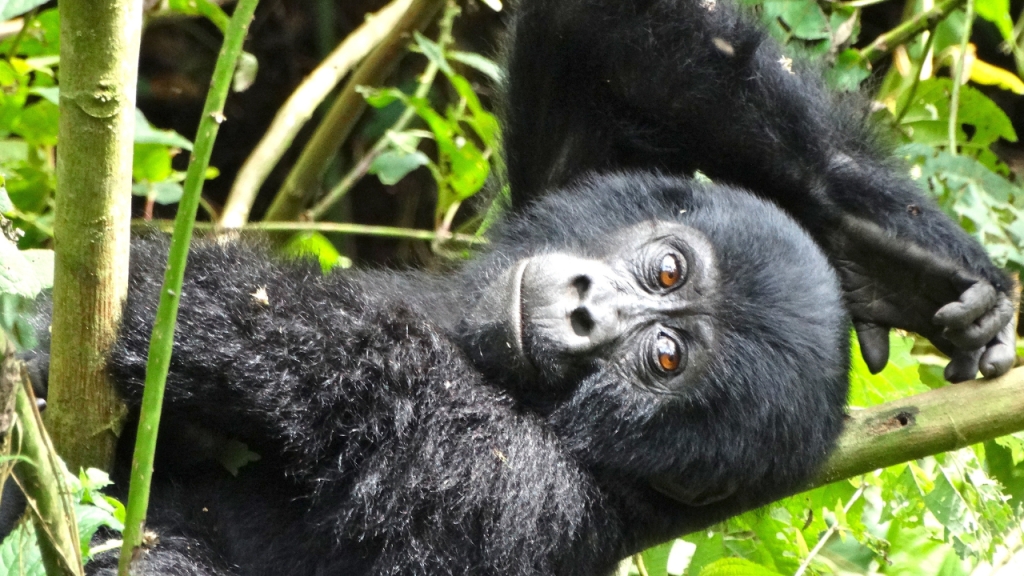
Conservation Impacts and Community.
Sustainable gorilla tourism in Rwanda is more than a model for tourism practices, but one of sustainable wildlife conservation. Money generated from permits is reinvested into gorilla conservation projects and activities within the local communities, like the building of schools and health centers; As much as 10% of this revenue is channeled back to the people since that alone incentivizes their support of conservation efforts; By going on gorilla trekking, visitors are contributing to the survival of mountain gorillas and also improving community livelihoods around Volcanoes National Park.
When to Go for Gorilla Trekking in Rwanda.
The best months to go gorilla trekking in Rwanda are during the dry seasons: mid-December to early February and June to September. Trails are usually drier, hence easier to take up, during these months. However, Volcanoes National Park is a tropical rainforest, and it usually rains all over the year, so one should be ready for changing weather conditions at any moment.
Important Tips to Go Gorilla Trekking in Rwanda.
Respect the Gorillas: Mountain gorillas are listed as endangered, and Rwanda’s conservation policies are tight. Follow all instructions provided by your guide in order to ensure that this is both safe and respectful. Always keep 7 meters away from the gorillas, follow the instructions of your guide, and avoid sudden movements.
Leave No Trace: Pack out all waste to protect the pristine environment.
Cultural Visits: Participate in the support of local artisans, restaurants, and community projects at the area. Several organizations can offer tours to share the rich Rwandan culture and heritage.
Health Precautions: Because gorillas are susceptible to human diseases, trekkers affected by colds or other illnesses should not participate to avoid any risk.
Camera Etiquette: Flash settings are best avoided, as that may cause unnecessary startling for the gorillas; enjoy the moment without excessive photography.
Be Patient and Flexible: Gorilla trekking is very unpredictable in nature, and landscapes differ in terms of topography and weather; therefore, patience and flexibility shall be appreciated.
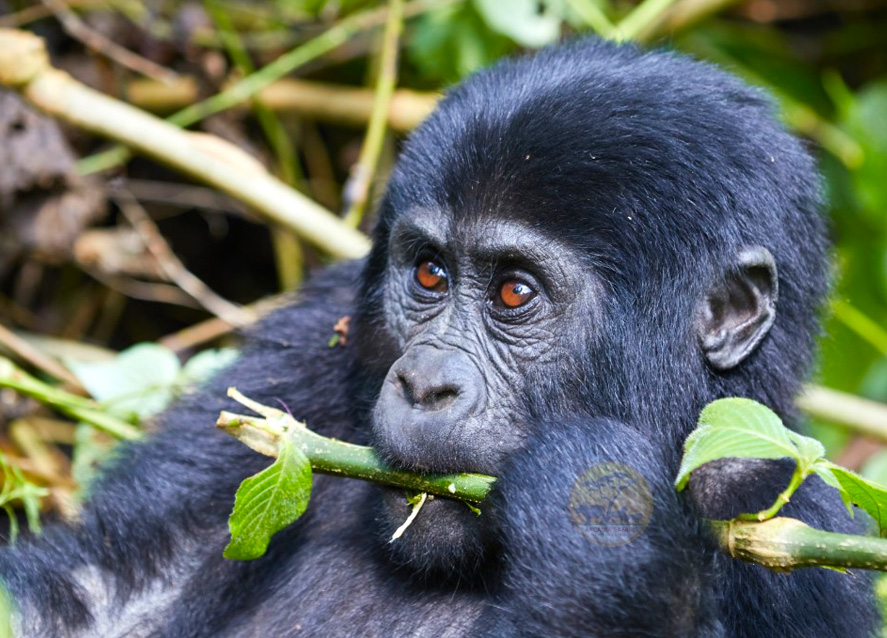
Our Best Rwanda Gorilla Trekking Packages.
14 Day Uganda-Rwanda Primates and Wildlife Safari
11 Day Rwanda Gorillas – Kenya and Masai Mara
7 Days Rwanda Gorilla and Chimpanzee Classic Safari Adventure
5 Day Rwanda Gorillas and Lake Kivu
5 Day Best of Rwanda Primates Safari
4 Day Gorilla Trekking and Golden Monkey Trekking
Beyond Gorilla Trekking: Exploring Rwanda’s Attractions.
While gorilla trekking can always be considered the pinnacle of any Rwandan experience, the country has a great deal more to offer beyond these internationally famous mountain gorillas. The following are a few outstanding places to visit and activities that one could engage in to enhance their expedition.
Kigali City Tour: Spend some time in Kigali, Rwanda’s clean and green capital city. You will be taken to the Kigali Genocide Memorial, one of the most moving places to learn about Rwandan history and the resilience of its people, and see local markets filled with handicrafts, textiles, and artwork representative of the cultural heritage here.
Nyungwe National Park: One of the oldest rainforests in Africa, offering great encounters with primates, such as chimpanzees and colobus monkeys; Nyungwe has something quite different: a canopy walkway that gives the visitor a look from above of the richness of biodiversity in this forest.
Lake Kivu: The view shows a serene blue lake with the surroundings of hills. The feeling of relaxation on this lake is incomparable. From kayaking or swimming to enjoying the peaceful lakeside scenery, one will love the outdoors on this lake, and hence it is a great place to relax after trekking.
Akagera National Park: Akagera is for classic safaris, with lions, elephants, and giraffes among a variety of animals. It offers a scenic game drive across the varied topography-from open plains to life-filled wetlands.
Remarks on Gorilla Trekking in Rwanda.
Gorilla trekking in Rwanda is special and humbling; it puts you face-to-face with one of nature’s most remarkable animals. It is a chance not only to see the mountain gorillas in their lives but also to help in their protection and economic development of the local communities; This is something every keen wildlife lover would like to do once in his or her lifetime, as Rwanda’s gorilla trekking takes one into some of the most dramatic landscapes and creates tales that will be told long after one has gone back home.
If you are ready for an adventure etched indelibly into your memory, then Rwanda’s gorilla trekking awaits—nothing but an adventure that deepens one’s connectedness with nature, conservation, and humanness.
